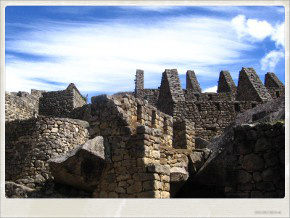Translators Associations Latin America
Latin America: One of the most ethnically diverse regions in the world
 In Latin America – the term was first used in Paris in an 1856 –, people speak primarily languages derived from Latin – like Spanish, Portuguese, French, and the Creole languages based upon these. In Latin America – the term was first used in Paris in an 1856 –, people speak primarily languages derived from Latin – like Spanish, Portuguese, French, and the Creole languages based upon these.
Despite this literal definition, in summary, the region refers to the Hispanic America and Brazil.
It has 25 translators associations, most of them in Argentina, and is the third world region with more translators associations, after Europe and North America.
As of 2010, Latin America’s population was estimated at more than 590 million inhabitants that make a melting pot of ancestries, ethnics, and races, making this region one of the most diverse in the world.
Latin America has an area of approximately 7,880,000 square miles, which is around 14% of the Earth's land surface, and is historically known to have been home to many indigenous peoples and advanced civilizations like the Aztecs.
Today, the vast majority of Latin Americans are Christians, mostly Roman Catholics. That is due to the presence of Spain, Portugal and other powers in the region, where by the sixteen century the European culture, customs and government became ‘the way’, along with the Roman Catholic Church.
Today, poverty is one of the region's main challenges and Latin America is said to be the most unequal region in the world.
Just to give an idea of this gap, Brazil is said to be on its way of becoming the fourth largest economy in the world by 2050 – and estimates say that Mexico, a country with at least three known translators associations, will be the fifth.
Inequality is undermining the region's economic potential – tourism is essential to the economy of several Latin American countries – and the well-being of its population, since it increases poverty and reduces the impact of economic development on poverty reduction.
Each country has its own specific ethnic composition. Many countries have a predominance of European-Amerindian, or Mestizo, population; in others, Amerindians are a majority; some are dominated by inhabitants of European ancestry; and some countries' populations are primarily Mulatto. Then, we regularly find minorities like Black, Asian, and Zambo (mixed Black and Amerindian).
Spanish and Portuguese are the predominant languages of Latin America, while
Latin American culture is a mixture of many cultural expressions worldwide, as it is the product of many diverse influences.
Countries like Colombia, Costa Rica, Peru, and Venezuela have more than one translators associations.
In Chile, there’s the Chilean Association of Translators and Interpreters that was founded in 1991. The Certified Translators Association of Uruguay, the Panama Association of Translators and Interpreters, the AGIT – the national translators association of Guatemala –, the ATIRD – the translation association in Dominican Republic – and the Ecuadorian Association of Translators and Interpreters are other translators associations in this region.
LEXIS INFORMS:
The Lexis Translators Associations News project depends on its readers. In order to spread the word, please share our link www.lexis.pro. You can also view and like our Facebook page, as well as share the contents of this website on Facebook, Twitter, Google+ and many other social networks. Lexis – Connections with meaning
PUB:
The Lexis Translators Associations News project has the support of the Red Horse. If you need a non-discloser agreement, visit the website www.redhorse-nda.com.
Read other news about translators associations from Africa.
|

